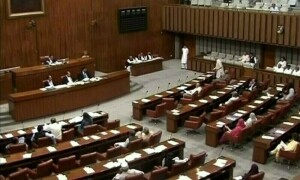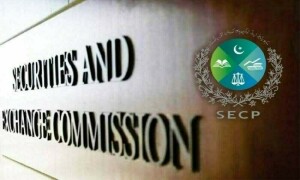The July inflation data was released by the Pakistan Bureau of Statistics (PBS) on the 1 of August, showing a decline in the Consumer Price Index to 11.1 percent as opposed to 12.6 percent in June and 11.8 percent in May; core inflation declined to 11.7 percent in July from 12.2 percent in June and 12.3 percent in May, Sensitive Price Index (weekly) for the week ending 25 July year-on-year registered at 20.09 percent with gas price impact of 570 percent, and onions 96 percent (July 2024 average SPI is 15.74 percent against 29.32 percent in July last year) and wholesale price index (WPI) was 10.36 percent in July this year as opposed to 23.07 percent last year.
Three extremely disturbing observations are necessary, which explain why the feel good factor of a decline in inflation is simply not being felt at the grass root level.
First, the government has projected CPI of 11.8 percent for the current year and, like the exchange rate projection, the rate in the first month of the year appears to be closely following the projection, raising concerns of a manipulation.
The International Monetary Fund (IMF) has however projected it at 12.7 percent – a difference of 0.9 percent. While given past precedence one may be tempted to consider the projection by the government as a mixture of optimism, political expediency and a capacity to manipulate data, with independent economists conservatively arguing that the rate is 3 to 4 percentage points higher than what is calculated, yet in all fairness the severely contractionary monetary (discount rate of a high of 19.5 percent – the highest in the region by far) and fiscal policies (higher taxes on the salaried, widening the tax net to include more items under sales tax including stationary, as well as the attempt to register 3.2 million traders though till date under 50,000 have registered in the finance bill) do indicate the distinct possibility of a decline in inflation.
Sadly, these anti-inflationary policies’ effectivity is minimised by contradictory policies including: (i) raising salaries of civilian and defence personnel by between 20 and 25 percent well above the projected inflation; and (ii) increasing reliance on domestic borrowing by 80 percent in the current year’s budget against the last year’s budget - at 5142 billion rupees against last year’s budgeted amount of 2860 billion rupees or an 80 percent rise - while injecting it right back in to the economy through a 21 percent rise in current non-development expenditure, a highly inflationary policy.
Non-bank borrowing notably savings schemes, GP fund and deposit and reserves are no longer a major source of government funding as low Gross Domestic Product growth, high unemployment and high inflation has eroded this source of funding for the government in recent years.
Second, the CPI (July 2024 at 11.7 percent) is usually quite a bit higher than the SPI because it takes account of the external value of the rupee (which has been remarkably stable since September last year) while the SPI, a better indicator of the feel-good factor (or lack thereof) for the general public, registered 18.41 percent for the week ending 1 August 2024 (though again bafflingly the PBS has given the July 2024 average rate of 15.74 percent with electricity charges declining by negative 15.80 percent when the charges have been continuously rising though gas charges have been shown to have increased by a whopping 570 percent).
Thus, in the week ending on 1 August the general public was subjected to 18.412 percent increase from the week before and therefore there was no feel good factor for the general public due to a CPI of 11.7 percent.
In addition, within the SPI the income quintiles that suffered the most were those with incomes between 22,889 to 29,517 rupees per month - 20.85 percent - followed by those who earned 29,518 to 44175 rupees per month - 18.73 percent. These income groups are invariably the worst hit due to over 75 to 80 percent reliance on indirect taxes as a revenue source of the government.
And finally, the weightage given to certain items in the SPI calculation may require a revisit – fresh milk (unboiled) 17.54, chicken (2.9), beef bone (2.4), sugar refined (5.1) and lawn printed 2.3 while gur is 0.23, and electricity 8.3.
Core inflation exclusive of energy and food prices is on the decline – from 18.2 percent in December 2023 to 11.7 percent in July.
The question is why? As per the Economic Survey 2023-24, “despite the observed decrease in core inflation during the current fiscal year, the average is still higher compared to last year, mainly due to an increase in the health and education subgroups”.
A look at the CPI shows that education rose by 11 percent and health by 23.5 percent – two major expenditure items of the middle income quintile – 23,000 to 45000 rupees per month. If one considers the actual amount budgeted for these two items, one would comprehend another reason why there is no feel good factor amongst the public given the persistent decline in inflation.
And finally, the wholesale price index (WPI) declined from 23.07 percent July-June 2023-24 to 10.36 percent in July 2024-25 and one would suggest that the weightage may be revisited as agriculture, forestry and fishery with 25.77 weightage maybe overlapping food, beverages, tobacco weightage of 20.7 percent, as well as with the 22.40 percent weightage to other transportable goods.
While the CPI national of 11.09 percent this fiscal year is close to WPI of 10.36 percent in the current fiscal year, yet it is relevant to note that the WPI average for 2022-23 was 38.55 percent against CPI of 24.93 percent. In other words, there appears to be a worrisome trend of data manipulation. In addition, with the prevalence of aarthis in the wholesale farm sector, it may be appropriate to usher reforms in the system through establishment of cooperatives.
It must be acknowledged that inflation and unemployment are two indicators that the general public is fully aware of, as and when it goes to the general or labour market. One would strongly urge the government to make PBS truly autonomous, in letter and spirit, to ensure accurate and unbiased data that would strengthen the economic team’s capacity to take appropriate mitigating measures on time.
Copyright Business Recorder, 2024

























Comments
Comments are closed.